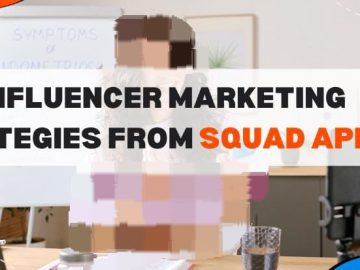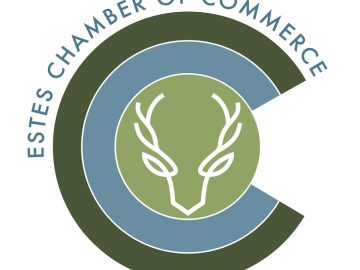As Sept, 30th gets closer, is it too late for marketing at the federal end of fiscal year is a question I’m often asked.
My answer is always, no, it’s not. Ideally, your marketing for the end of the fiscal year kicks off at the start of a new fiscal year. However, adding or amplifying additional activities with some quick planning and a sensible approach isn’t going to hurt your at the end of the year.
It can be tempting to wind down your marketing as sales and BD teams get busier and busier, but keeping marketing going will, at worst, set you up for a stronger start to the next fiscal year. In the best case, you uncover some additional end of fiscal year business.
The end of the fiscal year is a critical time. Continuing, or amplifying, your marketing activities can help influence decisions that haven’t yet been made, help get your company to the top of a shortlist and increase your visibility with agencies for which procurement funds just dropped that need and they need to make quick selections. Last-minute spending happens, especially in years with continuing resolutions.
It can feel daunting to get started on where to expand your end of fiscal year marketing. Begin by first evaluating your budgets and realistically assessing your team’s capacity. Consider marketing activities that require minimal time from your sales, BD, and procurement teams to execute, all of whom are already busy this time of year.
Next, armed with the knowledge of what budget and resources exist, evaluate what to do next to make some selections:
Content repurposing and amplification: Look at your existing content. Do you have a white paper that could be turned into a blog? Do you have a written case study that could get turned into a series of social media posts? Do you have some great industry research you could turn into an infographic? Did you run a content syndication or other program that performed well and could get turned back on? Can you cut clips from a webinar and launch a series of short videos? This is a great time of year to promote content.
Webinars and events: Can you expand your participation in upcoming events or market your presence more broadly? Is there a recorded webinar you can rebroadcast or promote for on-demand viewing? An older webinar you could quickly update content for and present again live?
Social media (especially LinkedIn): Focus on platforms where you are already active, especially LinkedIn. Create additional relevant posts from your company page, encourage employees to share and promote content, and if there’s budget, run some account and role-based targeted advertising on LinkedIn to get the right content in front of the right people. Mark Amtower shares some EOFY tips in his article How to leverage LinkedIn for the end of the fiscal year.
Re-engage prospects and customers: Simple things like checking in with customers or re-engaging leads who were just researching earlier in the year can yield great results. Send an email with some helpful resources or content and check in to see how you can help them.
Government buyers are doing more research before they speak with a company than ever before. Market Connections Marketing 4 the Public Sector study found that 59% of the content government buyers use is found by search, not provided to them. The cross-industry B2B 6Sense Buyer Experience report further supports this, showing that 79% of the time buyers have already established their requirements before they speak to a seller at a company and 70% of the buying journey is before they engage a seller.
Leveraging partners: This time of year is ideal for reinforcing partnerships with resellers, distributors, and teaming partners. Participate in your partner’s end of fiscal year marketing programs and look for collaborations on marketing campaigns or events. Turnkey or easy-to-launch campaigns in a box are ideal as partners are likely to be just as busy as your team. Joint webinar promotions are also a great fit with partners – you can drive anywhere from 30 to 50% more registrations with the right partner and share those partner-driven leads back to them to work.
Buying guides and making it easy to do business with you: Consider developing and sharing a brief buying guide that explains how to procure your products or services – contract vehicles, partners, the fastest way to reach your sales team. This information often found in your capabilities statement can easily be repackaged into an email, blog, or social media post.
Perform a quick audit of your website reporting. See where people are going for information to determine if there are any small improvements you can make to make it easier for your customers to research and contact you.
Also, evaluate if any of your Q4/fiscal year Q1 plans could be pulled forward to launch before the end of the fiscal year.
I’ve talked about what to do, but it’s equally important to look at what not to do when marketing at end of the year. In this highly competitive and busy time, avoid short-term thinking and off-brand messaging. This isn’t the time of year to make dramatic changes in your brand voice in the hopes you’ll be noticed. You want to build relationships and showcase your company’s unique offerings. Visibility by the right people is more impactful to your bottom line than something with viral reach to the wrong audience. Trying to drive business through discount offers can devalue what you offer, and potentially cause contracting issues down the line with other projects.
Be realistic about what you can get done. Don’t try to launch tight turn activities that require resources or budget you don’t have. And don’t forget to confirm you’re aligned with the teams that would follow up if people respond – you’ll need them on board.
Effective end of fiscal year marketing boosts awareness and can also get someone to engage with your company or add you to a shortlist. While marketing initiatives drive awareness over time and don’t always deliver fast results, consistent efforts will position your company for long-term success and a stronger start to the next fiscal year.
Lisa M. Sherwin Wulf is the founder and marketing consultant at LSW Marketing where she helps technology companies drive public sector growth with marketing. She is an award-winning marketing leader with over 25 years of experience in B2G and B2B technology marketing at small, medium, and large companies. Prior to founding LSW Marketing, she held key marketing positions at SolarWinds, Deltek, RightNow Technologies, and Software AG. Connect with her on LinkedIn:





